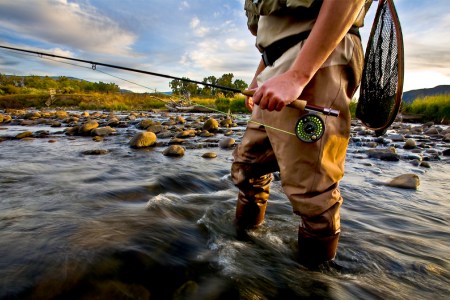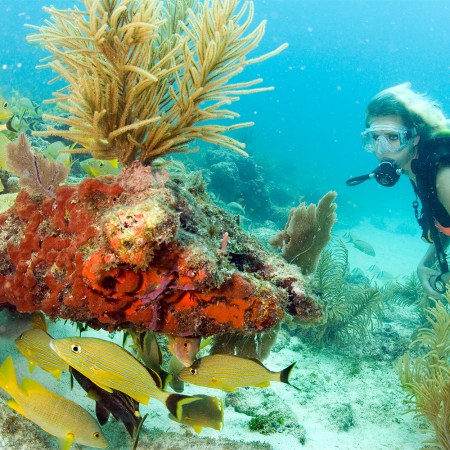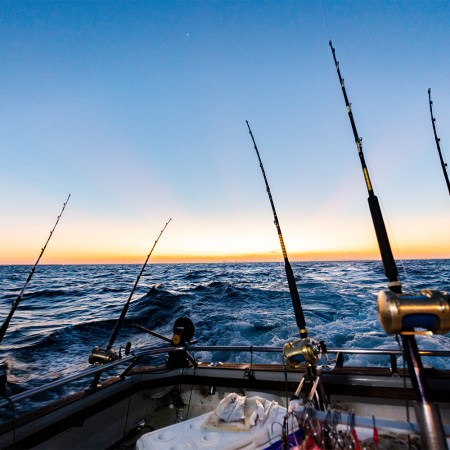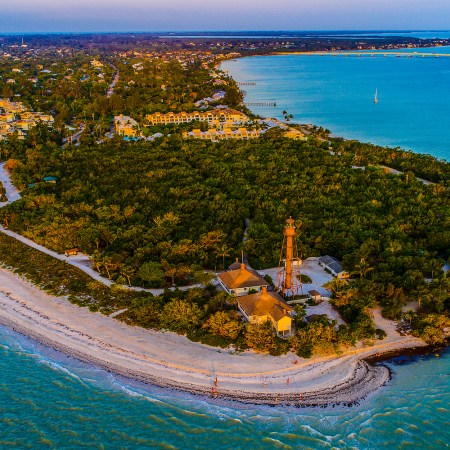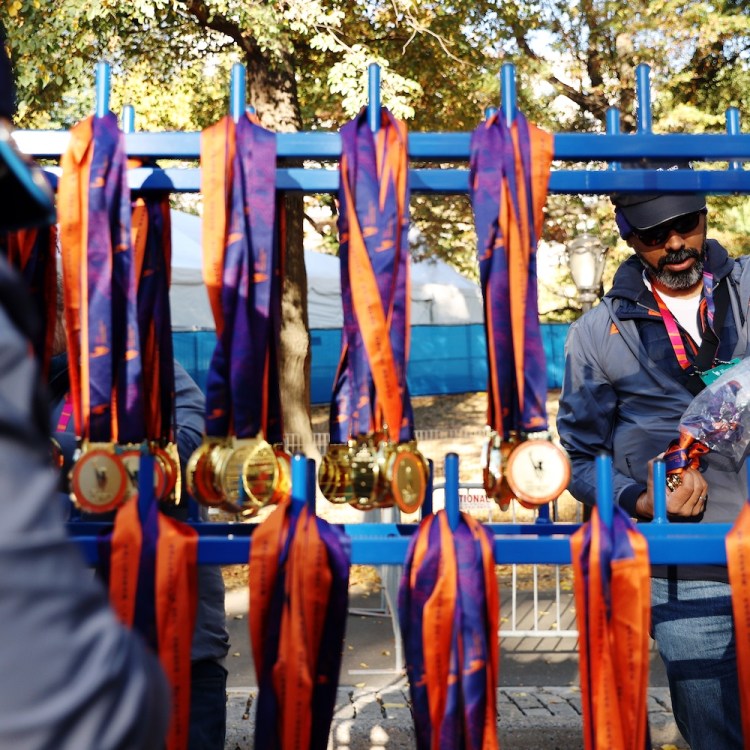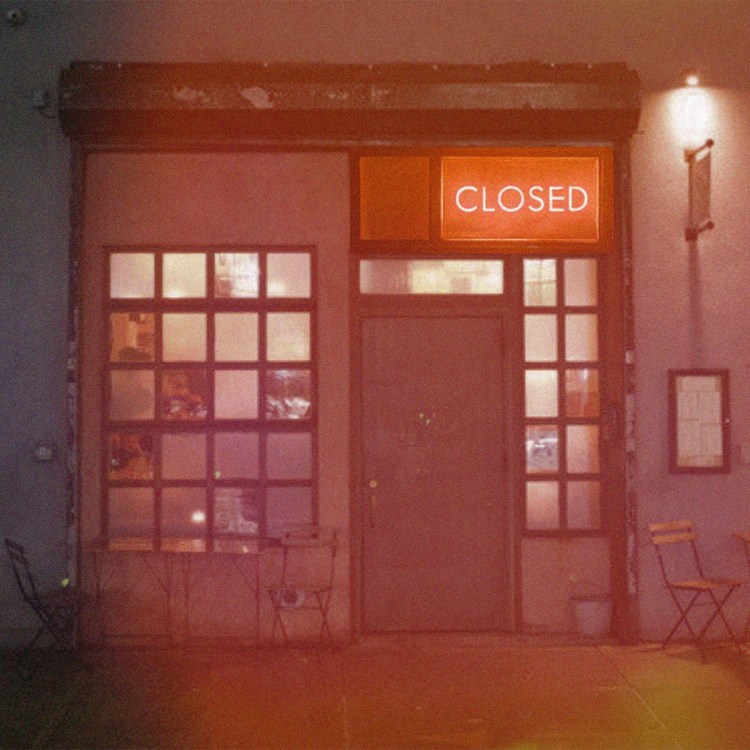I’m driving through the Catskill Mountains in New York, located about three quarters of the way up from the Big Apple to Albany, on a Sunday afternoon in early May. Every bend in every waterway looks as if it were an LL Bean advertisement. There are anglers of all ages, sizes and sexes decked out in waders, fly rods in hand.
I try counting, but stop after about a dozen. I’m a writer, not a mathematician, and I wasn’t sure if I’d be able to count that high.
When people think of fly fishing, their thoughts usually drift west. But this region is the birthplace of American fly fishing, and it still boasts some of the best trout fishing in the country. (Nearby Roscoe, N.Y., even bills itself as “Trout Town, U.S.A.”) Wanting to immerse myself in both past and present of my new favorite sport, I pointed my van northeast.
Although I love to fish, I’m not particularly good at it yet. Luckily, local guide Paul Schiavo from Catskill Outfitters offered to give me a hand. We spend the first two days on Esopus Creek, just outside the tiny hamlet of Phoenicia. We park next to a rail trail and hike over a pedestrian bridge on our way to the water, our waders and boots a sharp contrast to the lycra-clad cyclists pedaling by. A casual trail leads us down to the creek, surrounded by trees and prickly plants that wanted nothing more than to rip a hole in my Orvis waders.
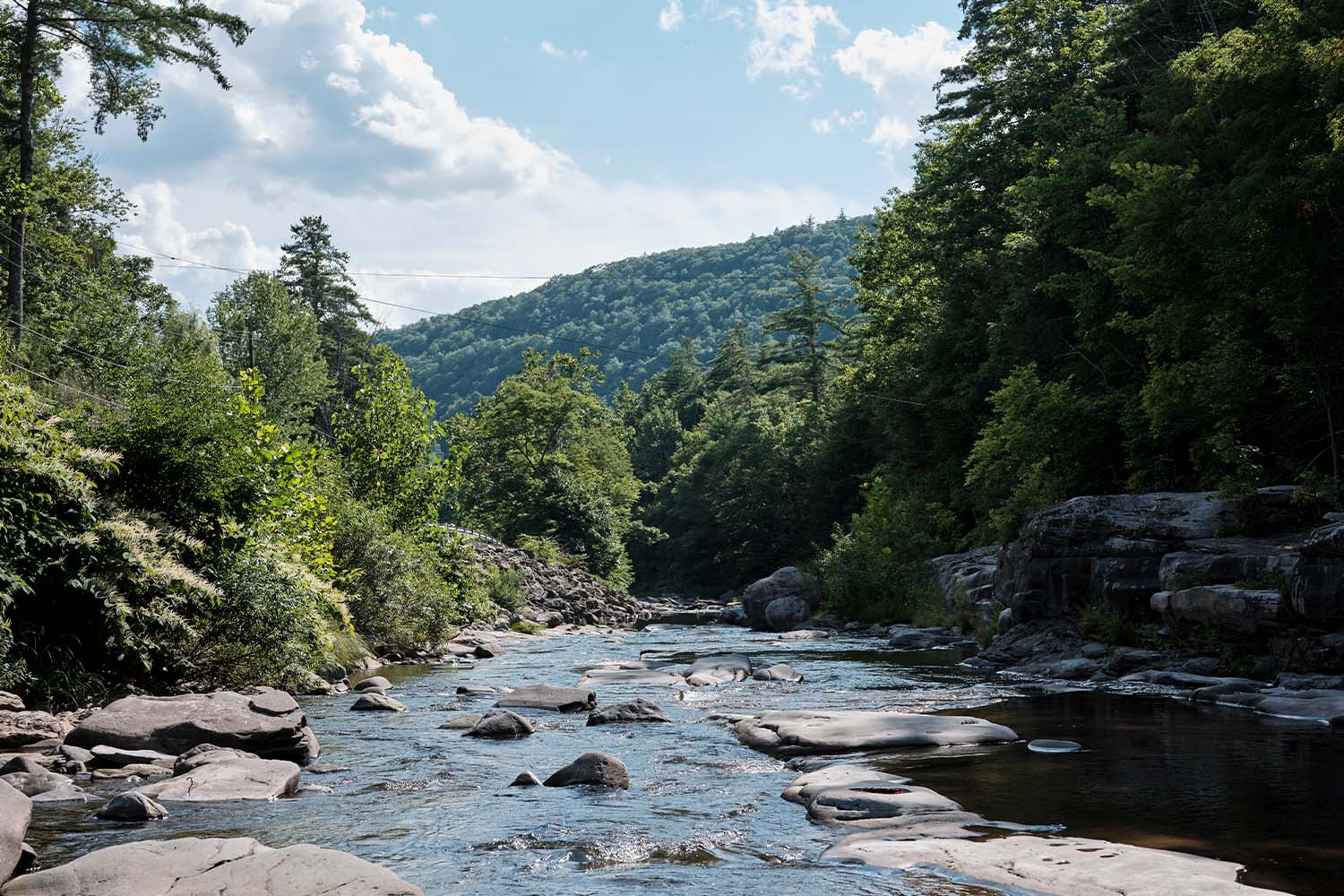
For the uninitiated, when you’re fishing with a dry fly, the fly floats on top of the water, mimicking a newly hatched insect or a larger adult that’s trying not to drown. For the first two days, I was nymphing, which involves weighting those flies down so they’re underneath the water. You can have two or three flies on the same line, giving fish double the menu items. Schiavo tied a rainbow warrior highlighted with an iridescent pink streak and a blowtorch fly with a bright orange trail and green collar on the end of my line. A strike indicator — essentially a small bobber for folks who grew up with a spinning rod in their hands — would let me know if a fish had taken the bait.
On a side note, there are a ton of flies with fun, silly or just weird names, like the red-tail wooly worm, parachute hopper, grizzly klinkhamer and green weenie. One day, I’d like to have a conversation with another angler and see if I can slip some made-up fly names — say Wu-Tang Clan members or Swedish death metal bands — into our conversation:
“Oh, that steelhead I caught? I tried both a Ghostface Killah and an Ol’ Dirty Bastard earlier in the day with no luck, but he took my first cast with an Inspectah Deck.”
“I did okay nymphing with a Duskfall and Ceremonial Oath, but the brookies were really going after the Autopsy Torment and Paganizer.”
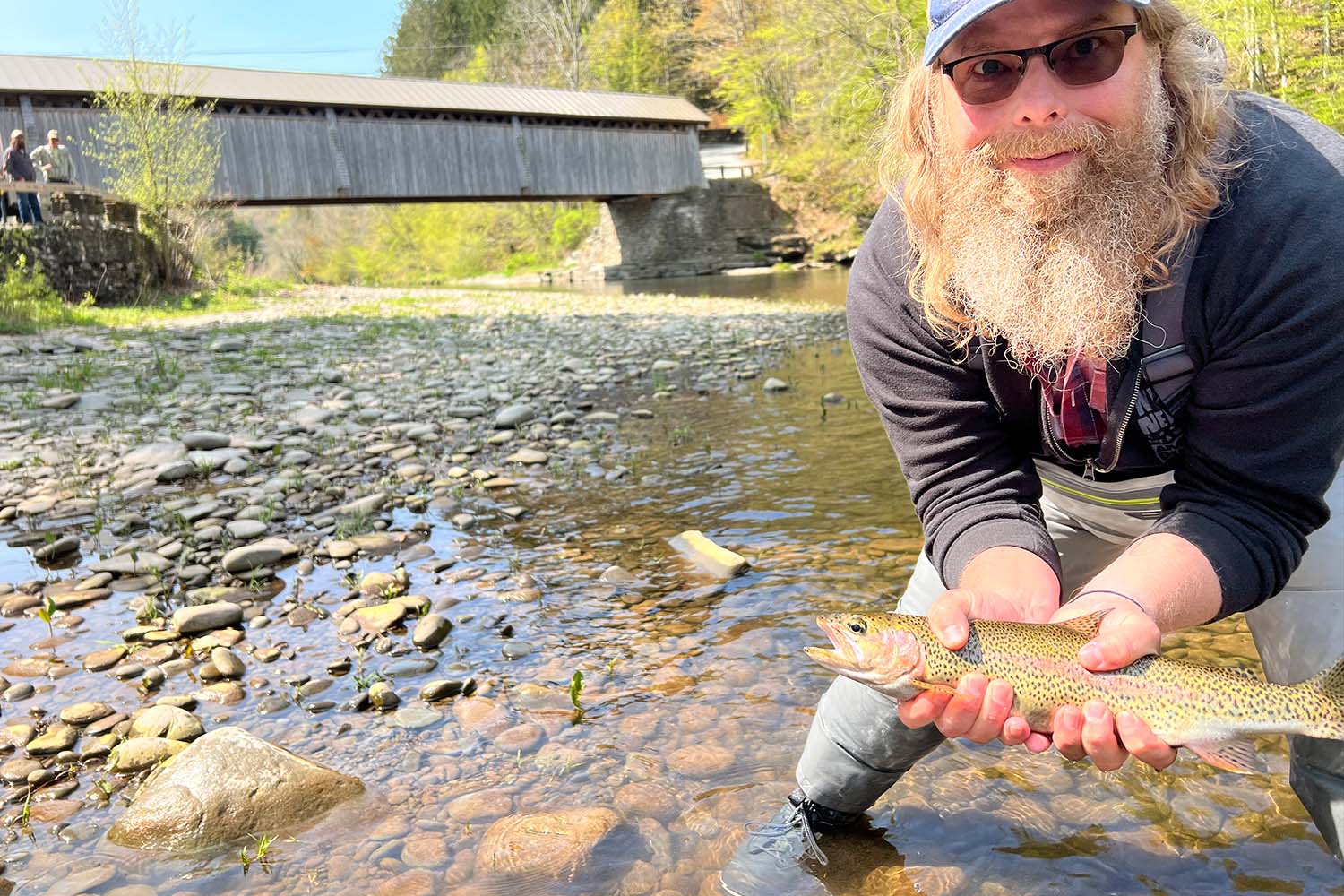
I cast into the gently moving water between the riffles, letting the current move the fly over where the trout were likely gathered underneath the water. The goal is to mimic actual bugs that the fish have eaten in the past. Because I forgot my Costa polarized fishing glasses at home, I have trouble seeing the tiny iridescent green strike indicator on the water. But when the first fish bite on the rainbow warrior, there’s no problem feeling it on the line. I pull back on my rod to set the hook, then begin to strip the line, bringing it closer to Schiavo who’s holding onto a waiting net. It’s a pretty average-sized rainbow, but I’m thrilled. I hold it in my hand long enough to snap a quick photo, then release it back into the water.
Over the next few hours, between stories about local legends Levon Helm, Rick Danko and Garth Hudson (three-fifths of Rock and Roll Hall of Famers The Band) I hook a half-dozen more ‘bows and browns. It was one of the most fun days I’ve had on the water so far.
I keep the good times rollin’ at Peekamoose, located about nine miles from Phoenicia. At the bar, under the judgmental gaze of a mounted elk head, I hoist a pint of local lager in honor of the fish I caught and another for the ones that got away. The steak frites are amazing.
A Complete Beginner’s Guide to Fly Fishing Gear
A comprehensive list of the basics you need to get started on the water this spring.I detour to Woodstock before visiting Big Pink, the namesake of one of The Band’s best albums and the house where they recorded The Basement Tapes with Bob Dylan. It’s an Airbnb now, but luckily unoccupied as I take selfie after selfie. I stop by the local cemetery, where I find the gravesites of both Helm and Danko.
We try a different section of Esopus Creek and, unfortunately, only manage to catch a couple of small trout. After the lessons I learned yesterday, I’d hoped for an even bigger day on the water. But there’s always tomorrow, Schiavo says.
However, that next day I’m casting into new water about an hour west. Schiavo’s partner Doug Kluthe is my guide now, and after five minutes of fishing the Beaverkill River, I’m ready to start browsing real-estate listings. The entire area looks like it was copied from a Norman Rockwell painting. Starting from a picturesque covered bridge, we wade upstream. I make four or five casts, then slide over a few paces and repeat the cycle. Suddenly, I feel the unmistakable tug on the line. I excitedly begin stripping the line as my Orvis rod bends considerably. Kluthe tells me to give the fish more line and let it tire itself out trying to escape. A minute or two later, I’m holding a 16-inch brown, the largest fish I’ve ever caught. I get several more hits throughout the day, but only reel in one other fish, a similarly large rainbow.
As great as that is, the best thing that happens to me today is meeting Joan Wulff, the undisputed queen of American fly fishing. She literally wrote the book on the sport and has helped teach the top instructors across the country for more than a half century. She and Kluthe are friends, so he reached out to her about meeting me.
Small in stature, Wulff used to beat men twice her size in fly-casting competitions back in the day. Men were so embarrassed, the story goes, they changed the rules to prevent her from competing against them. Now in her 90’s, she’s slowed down quite a bit, but still sharp as a hook mentally. Despite her many accomplishments, she’s charmingly humble and self-effacing. If I had a tenth of your accomplishments, I joke, I’d never shut up about it. We chat for a few minutes, then leave Joan to rest.

I want to continue the deep dive into history, so I visit the Catskill Fly Fishing Center and Museum just outside Roscoe. Executive Director Ali Abate is nice enough to give me a quick tour. Wulff and her late husband Lee re prominently featured throughout the museum, of course, specifically the gallery baring their names. The main exhibit space features relics of nearly a century of fly fishing in the area, with flies, vintage fly-tying stations, and many, many pieces of old gear. Abate says she has to turn down more donations than she accepts.
A few words of warning: Cell signal is spotty throughout much of the Catskills, so beware if you’re relying on Google Maps to navigate you to an unfamiliar place. I had an unexpected hour-long detour when my map failed. (Luckily, most restaurants and bars offer wifi.) Keep your fuel tank topped off, as only a handful of gas stations off the major highways remain open past 10 p.m. This actually leads to one of the most stirring moments of my trip. Just moments after hopping back in my van, a black bear nonchalantly ambles past the pumps of the darkened gas station, not three feet from my door.
For my last night in the Catskills, I stay at the Antrim Streamside resort, where my cabin overlooks Willowemoc Creek. The staff knows I’m here to fish, so they leave me a couple of flies from the Catskills’ own Dette Flies, the oldest fly shop in the U.S. Before check out, I wade into the creek and spend an hour casting along the banks, but with no luck.
The Catskills might be steeped in history, but there are few better places to get a line wet today. I’m already dreaming of catching more Beaverkill Creek mammoths in the future.
This article was featured in the InsideHook NY newsletter. Sign up now for more from all five boroughs.

